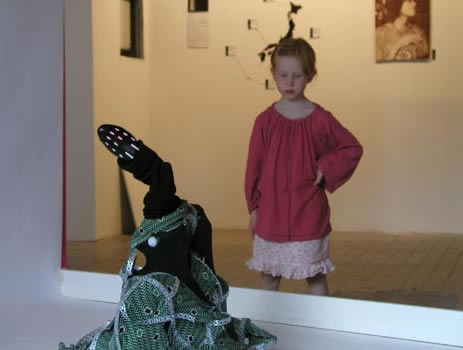
My objective with this installation was to explore the character and robot structures through the contextualizing, designing, constructing and exhibiting of a robot that evokes Caliban from Shakespeare’s Tempest.
The robot has three sensors that detect human motion. When a sensor detects movement the robot wheels towards the direction where it was detected and utters an insult. Caliban Robot’s character is organized in thirteen states which are based on the play’s text.
I expect the common visitor to spend between one and 5 min. observing the robot. Therefore it should be able to create a strong enough impression in a minute. That is why none of the sentences he utters is longer than 12 sec. and all choreographies are below a minute in duration.
A theater play is a set of instructions that when executed will produce a piece of virtual reality. Theater is a language for programming humans; it triggers them to perform a series of actions in order to create something else. The Tempest is a text that has outlived its creator and its moment in history. It’s a piece of theatrical code that always finds humans to execute its instructions. Such code has the ability to constantly renew its meanings, to reconfigure itself in time through human contact.
Tokyo Style in Gothenburg festival, 2004,
Röda Sten Museum, Gothenburg, Sweden
Thesis
Artificial Stubbornness, Caliban, Cipión & Berganza
Second Symposium on Computing Philosophy, Faculty of Science UNAM, Mexico City, 2024